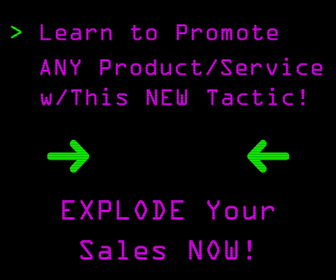Everyone knows your don't have to be an SEO expert to write a good blog. Many bloggers know nothing or very little about the world of SEO. By focusing on high quality content, design, layout, function-ability and the ability to share they are able to get around needing to know anything about SEO all together.
If you feel you are one of the bloggers mentioned above, take a few minutes and find out the 3 most important things you should start doing while blogging to increase your page rank and keep it that way:
Add Internal Links: Don’t think of internal linking as “PageRank sculpting” or some shady-hat SEO thing. The main reason to practice regular internal linking is that it makes your site stickier.If you write for CinemaFunk, you rank on the first page for “movie review blogs.” Good job! But let’s say, for example, that someone lands on your blog after googling “Ain’t Them Bodies Saints Review.” They find your movie review and read it with interest … but do they stick around and read anything else? They might, if they really like your writing style – luckily, CinemaFunk has a sidebar with links to recent reviews and most popular reviews. This is a great tactic to reduce bounce rate, since new visitors might want to see other content that best represents what you do. There’s a problem with relegating all your links to the sidebar, though – they’re not clearly relevant to the article the visitor landed on, since they’re the same links site-wide.
Internal linking do’s and don’ts:
- If you write a new post and realize you have nothing relevant to link to, do let that serve as a map for your next content pieces. For example, CinemaFunk compares Gravity to 2001, but the site doesn’t have a review of 2001 to link to. Why not post some reviews of classic films?
- Do use descriptive anchor text when linking internally. Hyperlink the words “Upstream Color review,” not arbitrary words like “reviewed last week.” This tells readers what they’ll get when they click the link. There is, theoretically, a risk of over-optimizing your anchor text, but that’s unlikely to happen if you’re not abusing automation or buying links.
- Don’t overdo it, obviously. Text with too many links is hard to read, and readers will just ignore them.
- Don’t get so excited about internal links that you never link externally. Sometimes an external link will be the best resource for your readers. Also, when people click that link, you’ll show up in the referring sites list for that external site’s analytics – and that’s a great way to make relevant site owners aware of your existence.
Optimize Images for Search: Often, popular blogs in non-SEO niches will have really beautiful images and photography. But more could be done here to optimize the image for search. The file name is a string of random letters and numbers. This isn’t readable by humans or search engine spiders. Further, the alt text doesn’t tell us what the image is either – it just refers back to the name of the post (“My Week in Photos”).
Blog image optimization do’s and don’ts:
- Do use descriptive words in your image file names. Instead of 662gf…., this photo should be named something like purple-lips.jpg.
- Do use your alt text to describe the photo. Use words that will tell Google what’s in the image. This will help it rank in image search results.
- Do choose photos that are relevant to the topic of your post. That way, you can describe what the photo is using keywords that will help your post rank in the regular search results too.
- Don’t use image file names and alt text as an opportunity for keyword stuffing. Cramming 20 words into your alt text (“purple lips sparkly lips purple lipstick purple glitter lipstick” etc. etc.) is unnecessary.
Long-Tail Keyword Research: Great bloggers tend to be really good at intuiting the topics their readers want to hear about – that, and/or they pay close attention to what their readers request in the comments. Often, blogging naturals just stumble upon great keywords. They might not even be using keyword tools; can you imagine?! If you’re just that good at giving the people what they want, I support you. But even if you don’t use keyword tools to get your initial content topic ideas, it’s a good idea to use them to find long-tail keyword variations on your topic of choice. Using those long-tail terms in your content will help you rank for a wider range of keyword searches.
Long-tail keyword do’s and don’ts:
- Do use long-tail keywords as a way of building out your content. Doing long-tail keyword research may make you realize that you can expand on a point you had forgotten.
- Do use long-tail keywords in subheads, image file names, your meta description … not just the regular text.
- Don’t long-tail-keyword-stuff. You can use long-tail keywords in your content without making it obvious that you’re doing it for SEO purposes, as in this old joke:
Always make sure your original URL and any pages you add to your website are fully optimized with the proper keyword placement. This will help you not only gain, but maintain page rank.
Do you have any other suggestions bloggers should be using to strengthen their SEO skills while blogging?
CHALLENGE Yourself to Profit!
Free Download: Build Your Profit-Generating Online Business With This Free Blueprint
Sign Up, follow the easy steps and You'll get the tactics, strategies & techniques needed to create your online profit stream. It's free!



